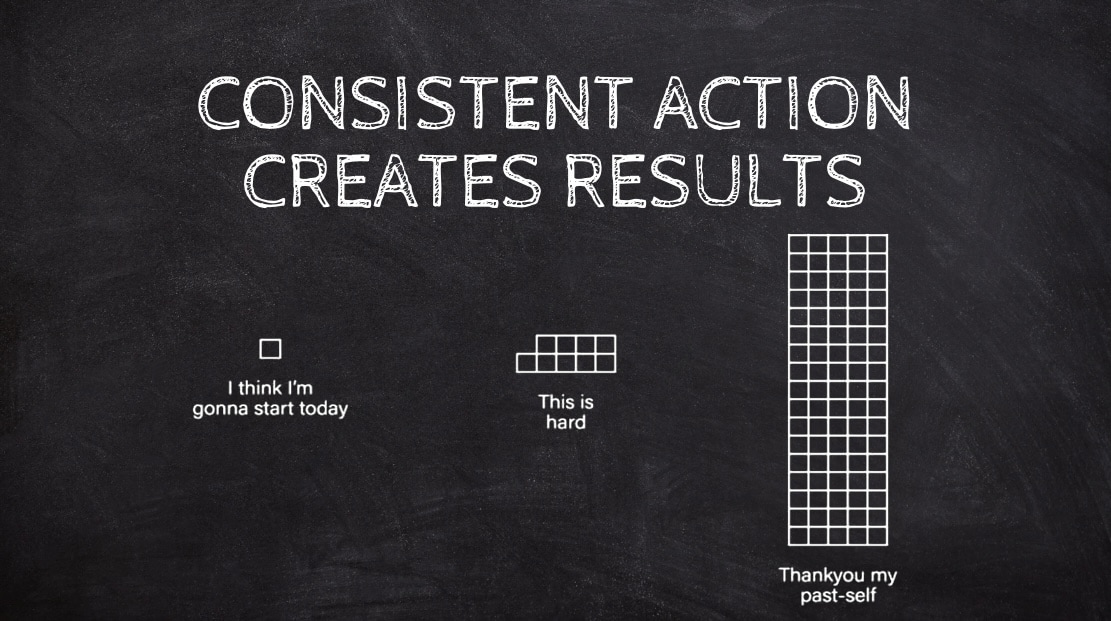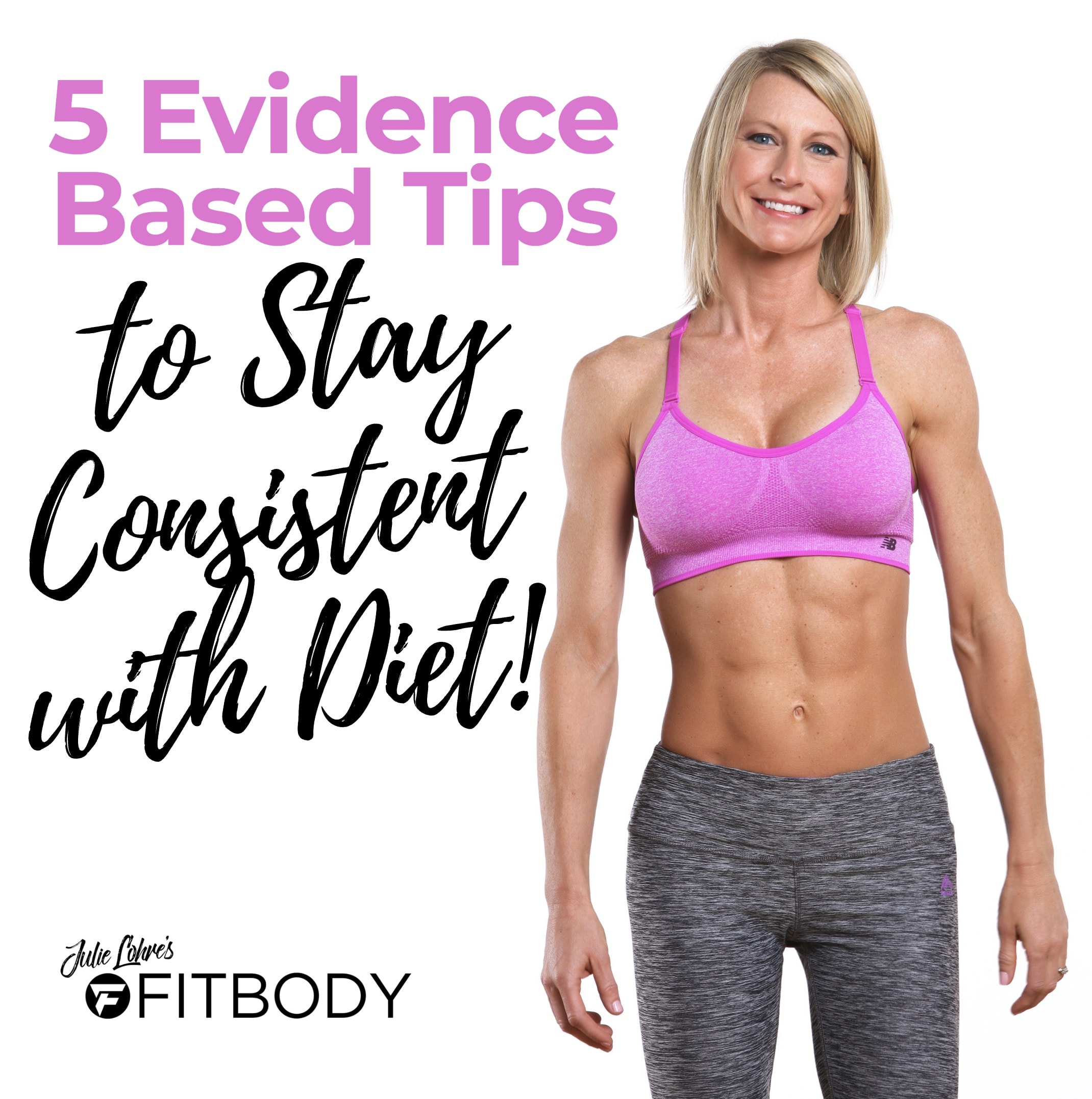5 Evidence-Based Tips for How to Stay Consistent Diet

As women over 40, we often face unique challenges when it comes to maintaining a consistent diet. Hormonal changes, a slower metabolism, and a busy lifestyle juggling family and career can make it seem almost impossible to stay on track with healthy eating. You’re not alone if you’ve been asking yourself, “How to stay consistent with diet?” This question resonates with many of us in this age group – including me – as we are all seeking balance and health in our lives.
In this article, I want to specifically address the concerns of women over 40 who struggle with diet consistency. Like so many of my online fitness and nutrition coaching clients, I understand that your dietary needs and challenges are different, and a one-size-fits-all approach just won’t do. Whether it’s battling weight gain post-menopause, managing stress eating, or simply finding the time and motivation for meal planning and preparation, our focus is on providing practical, research-backed strategies that answer the crucial question of how to stay consistent with your diet. These tips are tailored to fit into your busy life, helping you not just to make healthy choices but to maintain them long-term.
#1 TIP ON HOW TO STAY CONSISTENT WITH DIET… STOP THINKING OF IT AS A DIET
The worst thing you can do when trying to limit your calorie intake is to think about your food as a “DIET”. The moment most women list out the foods that are totally off-limits, the cravings begin. I don’t want you to feel restricted by the food that you are not allowed to eat; rather I want you to feel empowered by all of the delicious food you can eat! Diets are associated with all sorts of negative feelings, so replace the word diet with “new healthy lifestyle” which is much more positive and refers to a continuous nourishing lifestyle.
Instead of saying, “I can’t eat that, I’m on a diet”, think of all the fantastic dishes and snacks you can create with healthy ingredients.
Redefine Your Eating Approach:
- Evidence: Labeling your eating plan as a “diet” often harbors negative connotations and can heighten cravings for restricted foods. A study in the Journal of Consumer Psychology highlighted that individuals who considered certain foods as “forbidden” experienced stronger desires for them.
- Application: Shift your mindset from “diet” to “healthy lifestyle,” focusing on the variety of nourishing foods you can enjoy, rather than on restrictions. This positive perspective is more sustainable and less likely to trigger cravings.

2. HAVE A PLAN
One of the main reasons that people fall off the wagon is down to convenience. You arrive home from work so hungry that in a few moments, your better judgment has gone out of the window, and you automatically grab a huge bowl of cheesy pasta.
Eliminate the thought process of cheating on your healthy-eating plan by making those decisions in advance by creating a meal plan. Write down seven dinners, lunches, and breakfasts you would like to eat over the next week and only buy ingredients for these meals so that you can’t be tempted to stray.
Strategically Plan Your Meals:
- Evidence: The convenience factor plays a significant role in dietary adherence. Research in the International Journal of Behavioral Nutrition and Physical Activity found that meal planning was linked to better dietary outcomes.
- Application: Pre-plan your meals for the week, which helps in making healthier choices and reduces the likelihood of deviating from your healthy eating goals.

3. DON’T GO FOOD SHOPPING WHEN YOU ARE HUNGRY
Once you know what you want to eat, then it’s time to hit the supermarket, but don’t even set foot in the door if you are hungry. Your willpower will be lower, and suddenly all the food you have been avoiding will be irresistible, and you’ll end up with a trolley full of guilt.
Better yet, order home delivery of your groceries. You will be able to take your time and pick exactly the right ingredients, plus as the food won’t actually be in front of your eyes, it will be easier to say no.
Shop Smartly:
- Evidence: Shopping when hungry can impair judgment, leading to impulse purchases of higher-calorie foods. This was demonstrated in a study published in JAMA Internal Medicine.
- Application: Avoid grocery shopping on an empty stomach. Alternatively, online grocery shopping can be a strategic way to select healthier options without the influence of in-store temptations.
4. CURB CRAVINGS WITH EXERCISE
Cravings come in waves that don’t last long, but man, are they difficult to control! While eating a healthy alternative is one way to curb cravings, it won’t eliminate the urge in the first place, so occupy yourself with something non-food related to banish cravings once and for all. Try doing some quick circuit exercises like squat jumps, press-ups, and burpees for five minutes or until the cravings have subsided.
Utilize Exercise to Manage Cravings:
- Evidence: Engaging in physical activity can effectively curb food cravings. A study in the journal Appetite indicated that exercise could reduce the urge for high-fat foods.
- Application: When cravings strike, consider short bursts of exercises, such as squats, press-ups, and burpees, to help distract and diminish them.
5. EAT AT SPECIFIED MEAL TIMES
Create healthy eating habits that don’t include snacking, which is where you may fall off the wagon. Set specific meal times for breakfast, lunch, and dinner, and make sure you stick to these. Choose five or six smaller meals if you feel as though you’d rather eat little and often.
Establish Regular Meal Times:
- Evidence: Consistent meal timing can aid in maintaining a healthy diet. Research in the International Journal of Obesity found that regular eating intervals were beneficial for weight maintenance.
- Application: Set and adhere to specific times for meals, which helps in establishing a routine and reduces the likelihood of unplanned snacking.
BONUS: To be clear: consistency ≠ perfection
Getting healthier and hitting your fitness goals does not require perfection. Making changes does not require you to flip your entire world upside down.
Right!?! (Insert big sigh of relief here.)
Putting in any effort beyond what you’ve been doing, counts!
Moreover, focusing on putting effort into small, manageable changes instead of “crazy-change-everything-all-at-once” changes is the best long-term strategy for health!
If you can consistently be a little better every day, week, or month…you will build LASTING habits and a lifestyle that supports your health and fitness.
Many like to think of dietary changes as all or nothing. What we need to do is work on becoming better, not perfect. Failure is normal, but getting back on track again is not. Strive to get back on track more often than not, and you’ll see your health change and your attitude towards it as well.
Appendix
In building this article, the following scientific studies were referenced:
- “Forbidden Fruit: Does Thinking of Foods as Forbidden Increase Their Desirability?” Journal of Consumer Psychology, vol. 22, no. 3, 2012, pp. 482–489. ScienceDirect, doi.org/10.1016/j.jcps.2011.10.002.
- “Meal Planning is Associated with Food Variety, Diet Quality and Body Weight Status in a Large Sample of French Adults.” International Journal of Behavioral Nutrition and Physical Activity, vol. 14, no. 12, 2017. BioMed Central, doi.org/10.1186/s12966-017-0461-7.
- “Shopping on an Empty Stomach: Hunger and Acquisitions.” JAMA Internal Medicine, vol. 173, no. 12, 2013, pp. 1146–1148. JAMA Network, doi.org/10.1001/jamainternmed.2013.650.
- “Effects of Exercise on Food Cravings and Eating Behavior.” Appetite, vol. 53, no. 3, 2009, pp. 384–390. ScienceDirect, doi.org/10.1016/j.appet.2009.07.004.
- “Meal Timing Influences Daily Caloric Intake in Healthy Adults.” International Journal of Obesity, vol. 38, 2014, pp. 1445–1450. Nature, doi.org/10.1038/ijo.2014.63.


